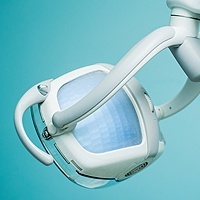Dental Procedures Los Angeles, CA
Dental procedures involve all procedures and treatments that are not considered or performed routinely. Routine procedures include examinations and professional cleanings, along with a few treatments for functional purposes. Dental procedures cover many aesthetic and functional treatments, from basic fillings to tooth replacements and extractions.
Various dental procedures are available at Vatan Dental Group in Los Angeles and the surrounding area. We can help you achieve and maintain a healthy smile by treating conditions as soon as they arise. Call us today at (310) 906-1300 to schedule an appointment or learn more about our services.
Who Needs Treatment
Keeping up with routine dental procedures is integral to maintaining one's oral health. Doing so can also help patients and their dentists catch any forming problems that require more involved attention. Patients may require various dental procedures (such as dental fillings, dental crowns, root canals, tooth replacements, root scaling and planing, and tooth extractions) if they are dealing with tooth decay, tooth damage, or gum disease. Many different factors can cause tooth damage, such as teeth grinding (bruxism) or trauma. Our qualified team works closely with our patients to provide them the best, individualized treatment plan.
“Patients may require various dental procedures … if they are dealing with tooth decay, tooth damage, or gum disease.”
Composite and Fillings
Tooth fillings are primarily done to remove decay and fill a space immediately to prevent the further spread of bacteria to surrounding teeth, gums, and bone. They are also used to restore or repair cracked, chipped, or broken teeth. Typically, we will administer a local anesthetic to keep the patient comfortable during treatment. Then, we remove the decay using a drill, air abrasion tool, or laser and fill the empty space with the filling material. Lastly, we use a special light to bond the material to the tooth until it hardens.
There are several types of filling materials used in dentistry, including gold, porcelain, silver amalgam (mercury mixed with silver, tin, zinc, and copper), tooth-colored, plastic, and composite resin fillings. Each of these comes with specific advantages and disadvantages, costs, and longevity. We will determine the most effective type of filling material by the amount of decay present. We can also consider using tooth-colored resin to match the rest of the mouth.
“Tooth fillings are primarily done to remove decay and fill a space immediately to prevent further spread of bacteria to surrounding teeth, gums, and bone.”
Dental Crowns & Root Canal Treatments
Dental crowns, also known as "caps," are meant to protect and repair damaged or weak teeth. They may consist of different materials, such as metal or porcelain. They may enhance or restore a tooth's shape, size, strength, and appearance. Dental crowns may also help hold damaged teeth together and support teeth with large fillings where there is little remaining natural tooth left. Dentists may employ dental crowns to keep bridges in place, disguise misshapen or discolored teeth, or cover dental implants. Getting a dental crown requires at least two separate office visits, as the dentist will need to take X-rays, impressions, or scans to ensure the patient will have the correct fit.
Patients may need root canal treatment if the pulp of their teeth is inflamed or infected. This could be due to deep decay, excessive dental procedures, faulty crowns, or a crack or chip in the tooth. It is even possible for a tooth to have undergone trauma without any visible chips or cracks. Root canal treatment involves removing the inflamed or infected pulp, cleaning and disinfecting the inside of the tooth, and filling and sealing the remaining space. The dentist will then restore the tooth with either a crown or filling for protection. This will allow it to function like a natural tooth.
“Dental crowns, also known as “caps,” are meant to protect and repair damaged or weak teeth.”
Check out what others are saying about our dental services on Yelp: Dental Procedures in Los Angeles, CA
Tooth Replacement & Root Scaling and Planing
Replacing missing teeth is more than just an aesthetic matter. Over time, gaps in between teeth may negatively impact a patient's speech, eating, bite, and facial appearance. From trauma, decay, or genetic conditions, there are many different reasons a patient may be missing a tooth. Fortunately, effective replacement options are available. Some of the most common include dental implants, fixed dental bridges, and removable partial dentures. Our team works closely with our patients to determine which tooth replacement option is best for them.
Untreated gum disease often precipitates tooth loss. When it comes to treating this condition, early detection is key. As long as the disease has not yet reached the structures below the gum line, a root scaling and planing (also known as a deep tooth cleaning) may be able to reverse its effects. The procedure consists of the dentist removing all the plaque and tartar both above and below the gum line, then smoothing out the patient's teeth roots to assist the gums in reattaching to the teeth.
“Over time, gaps in between teeth may negatively impact a patient’s speech, eating, bite, and facial appearance.”
Questions Answered on This Page
Q. Why do I need routine dental treatment?
Q. Why might I need a dental crown?
Q. What tooth replacements options are available?
Q. What are some of the reasons one might need a tooth extraction?
People Also Ask
Q. What methods are available to repair a chipped tooth?
Q. What happens during a routine dental checkup?
Q. What does the dentist look for in a dental examination?
Q. Do I need a tooth extraction?
Q. What are fluoride treatments?
Q. What to do between dental visits?
Q. What happens during a routine dental checkup?
Q. What should I know before beginning my search for a dentist?
Tooth Extractions
Tooth extractions are a common dental procedure that may be performed for a variety of reasons. Teeth may need extraction due to severe tooth decay or periodontal disease, trauma, injury, an abscess, malocclusions, tooth impaction, or compromised wisdom teeth. In most cases, the patient is given a local or general anesthetic, depending on their condition and its severity.
There are simple and surgical extractions. A simple extraction involves the removal of a visible tooth that can be loosened and easily removed using a single instrument. A surgical extraction involves extracting a tooth that lies beneath the gums or is broken at the gumline and is much more difficult to remove. Wisdom teeth are the most common type of extraction, although they can be considered simple or surgical depending on their placement in the mouth.
We will discuss after-care tips with every patient undergoing an extraction procedure. It is important to rest before and after the procedure as teeth and gums will likely be sore and tender. We will make additional recommendations on a case-by-case basis.
“Teeth may need extraction due to severe tooth decay or periodontal disease, trauma, injury, an abscess, malocclusions, tooth impaction, or compromised wisdom teeth.”
Frequently Asked Questions
Q. Do most dental procedures hurt?
A. We administer an anesthetic for most non-routine dental procedures to keep patients comfortable and pain-free during treatment. In many cases, patients may feel soreness, tenderness, and slight discomfort following a procedure due to the pressure put on the teeth and gums. However, this should dissipate within the first few hours or, at the most, a few days.
Q. How much do dental treatments cost on average?
A. Every dental procedure differs in the materials used, extent of decay, and length of time. As such, the cost of each procedure is discussed after an examination appointment in which we can properly determine what the treatment will entail. It is a good idea to also discuss your dental package with your insurance provider.
Q. How long do dental crowns last?
A. Dental crowns have become quite durable with recent advancements in dental technology. Most crowns, depending on the material used, can last from five to 15 years with adequate care and maintenance. We will discuss a crown's possible longevity with the patient during their placement appointment and provide them with healthy hygiene habits to adopt.
Q. How can I properly care for and maintain healthy teeth at home?
A. Basic brushing is not enough to maintain healthy teeth and gums, especially following any dental treatments. We recommend patients brush their teeth two to three times daily, rinse after each meal, and floss at least once a day. It is also important to avoid sticky, hard, sugary, and acidic foods and beverages that easily decay the teeth. Lastly, make sure to visit your dentist regularly for a biannual checkup and cleaning.
Q. When does pain become abnormal after an extraction or root canal treatment?
A. Extensive procedures, such as extractions, root canals, and surgeries, often have the longest recovery time. However, anti-inflammatory and pain medications should help with swelling and healing. Patients should not experience pain for longer than two weeks. Give us a call if you are experiencing pain for longer than the ascribed time for your procedure type.
Dental Terminology
Quality Dental Services Can Transform Your Smile
By visiting us as soon as possible, our team can help get you the professional treatment you need. Instead of waiting around and allowing the symptoms to get worse, we can provide you with stronger medication and treatment options instead of ineffective store-bought products.
Helpful Related Links
- American Dental Association (ADA). Glossary of Dental Clinical Terms. 2025
- American Academy of Cosmetic Dentistry® (AACD). Home Page. 2025
- WebMD. WebMD’s Oral Care Guide. 2025
About our business, license, and website security
- Vatan Dental Group was established in 2012.
- We accept the following payment methods: American Express, Cash, Check, Discover, MasterCard, and Visa
- We serve patients from the following counties: Los Angeles County
- We serve patients from the following cities: Los Angeles, Inglewood, Westchester, Marina del Rey, Playa del Rey, Playa Vista, Culver City, Fox Hills, Hawthorne, El Segundo and Santa Monica
- CA (License #49259). View License Information and Specifics
- National Provider Identifier Database (1740278662). View NPI Registry Information
- Norton Safe Web. View Details
- Trend Micro Site Safety Center. View Details
Back to top of Dental Procedures












